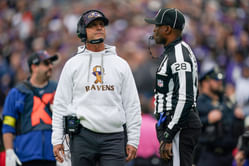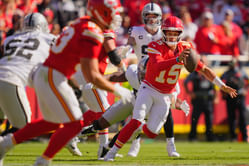
Making the perfect NFL schedule is no mean task. There are an immense number of factors that need to be looked at before finalizing the one schedule that will be used by the league for the upcoming schedule. The NFL is a league that is driven by passionate fans who are loyal to their teams. There is a feeling of euphoria in the stadiums and some of the biggest games of the year are those featuring intense rivalries that go back decades and decades.
It is not an easy job to ensure that all rivalry games get the best time slots for those watching from the comfort of their house. Then there are games on holidays such as Thanksgiving Day and at times Christmas Day also. The NFL has also branched out to foreign countries in a bid to globalize the game of gridiron football and increase its revenue on a larger scale. The league has to take into account all the home games, the away games, the availability of the stadiums on particular dates, and so much more minute details. So how does this seemingly impossible task see the day of light each and every year?
NFL’s Scheduling Formula
Before we try to grasp how the NFL schedule is made, we first need to understand the scheduling formula the league operates by. This concept is very important as it is the basis on which the entire schedule is based. The most important things to know are that the league consists of two conferences, the AFC and the NFC. Further, both conferences are divided into four divisions each. Another key aspect is that the schedule is based on a rotation policy as well as the results of the previous year.
So for example, if we consider the AFC East division, then the scheduling committee is aware that all teams in the AFC East will play each other twice (one home and one away) in a season. That means 6 games are set. Then, as the league follows a rotation based policy, the committee is also aware which other division from the AFC the teams will play. For example, the AFC East will play all four teams from the AFC West in 2023 and all four teams from one NFC conference. This year it will be the NFC East. This gives us 14 games per team.
Now, as the previous season is over, the committee is also aware which team has finished in which place in their respective divisions. With three games left, let’s take the example of the Miami Dolphins from the AFC East. They finished second in the 2022 season. Therefore they will play both second placed teams from the AFC divisions which they are not playing this year. That means they will play the second placed Baltimore Ravens from the NFC North and the Tennessee Titans from the AFC South.
The last game left to be scheduled is also known as it will be played against a team that has finished in the same position from a division of the other conference from against whom the Dolphins did not play the previous year and a division that they will not play next year. In this way, all 17 games of every franchise are available and now it is a matter of putting everything together.
How is the NFL schedule made?
First and foremost, making such a complex schedule involving 32 teams, 17 games per team, bye weeks, stadium availability, travel, games at international venues, and more requires not just one or two but a full team of people to work tirelessly day in and day out over a certain period of time. Back in the day when software was not as advanced as today, the team would literally just sit together and go about the tedious process by hand. Now that’s saying something.
However, things have become a bit simpler for those folks in the background nowadays as the computers have taken a great deal of load off their shoulders. The data is fed in a software that uses an organizer called Gurobi optimization designed in western Canada by a company called Optimal Planning Solutions. Generally, the day after the Super Bowl on Monday, the team starts inputting everything they already know in the software such as all the games that each team will play. This is the easiest part as the league has a standard way of going about which teams will play which teams every year as we have seen in the scheduling formula.
As a result of all these games, there is truly a massive number of permutations and combinations that can be applied to see where each game in the schedule can be placed. After the basics are fed to the computer, the committee then has to figure out which games deserve the prime time slots, which networks will broadcast the games, which teams will play on foreign soil, which games will be played on the holidays. If you think that all, then wait, because there is still Monday Night Football, Thursday Night Football, and after December, Saturdays also get to see some action.
And there is still so much to think about. There are traditional rivalries, fan based rivalries, elite quarterback duels to factor in. Plus, there are instances when a legendary ex-franchise player plays against his former team as was the case with Tom Brady when the Tampa Bay Buccaneers faced the New England Patriots in 2021 for the first time since Brady’s departure. These are some of the most difficult decisions the committee has to take before finalizing the schedule.
At last, when the scheduling committee is satisfied with their entire data and all the rules that need to be followed, they let their software do the most difficult task - creating hundreds and hundreds of schedules until they are content with the one they feel is the best out of all possible outcomes. When all this is over with, the final hurdle in the process is to get the approval of the NFL commissioner. And there you have it, this is how the NFL season schedule is made.
FAQs
A. The short answer is yes, it is made on the computer using a complex organizing software that works with the information provided by a committee. However, in order to make the schedule, a lot of human effort is required to tell the computer what all the requirements are.
A. One season of the NFL consists of a total of 272 games. Each team plays 17 games in the regular season.
A. All 32 teams in the NFL are first organized into two conferences of 16 teams each. Then each conference is further divided into four divisions of four teams each.









